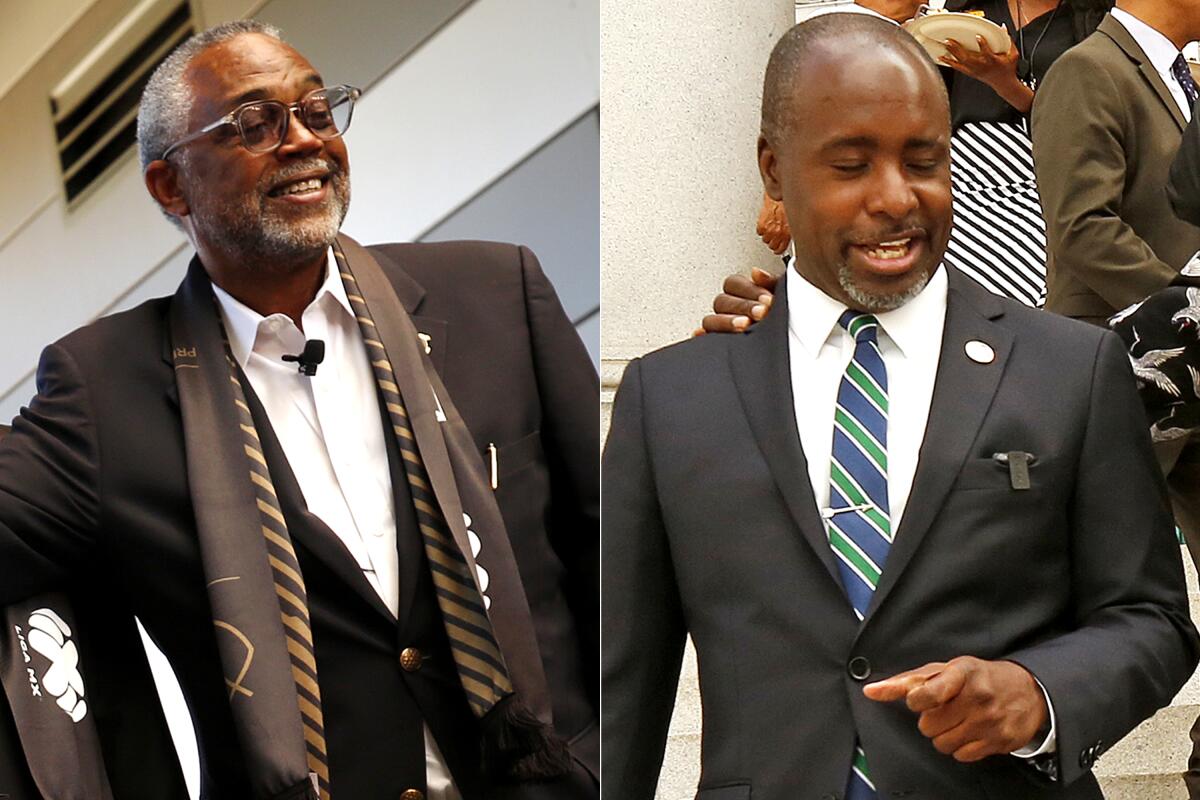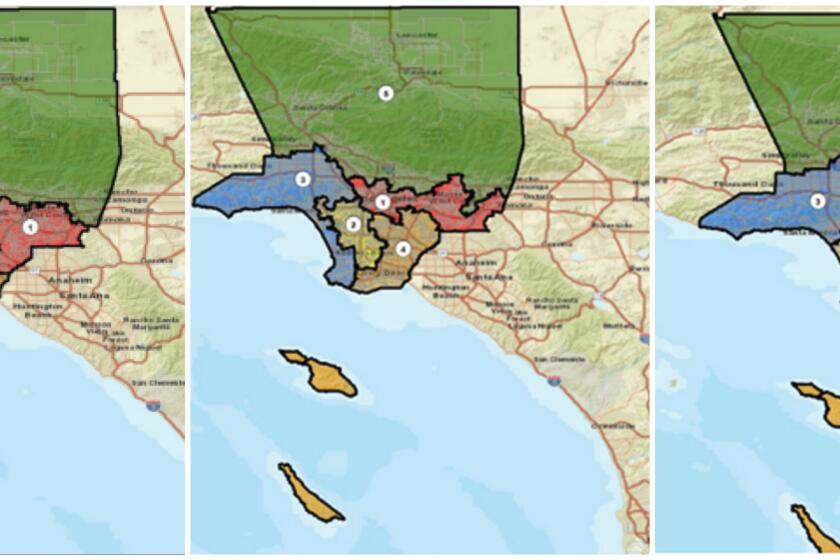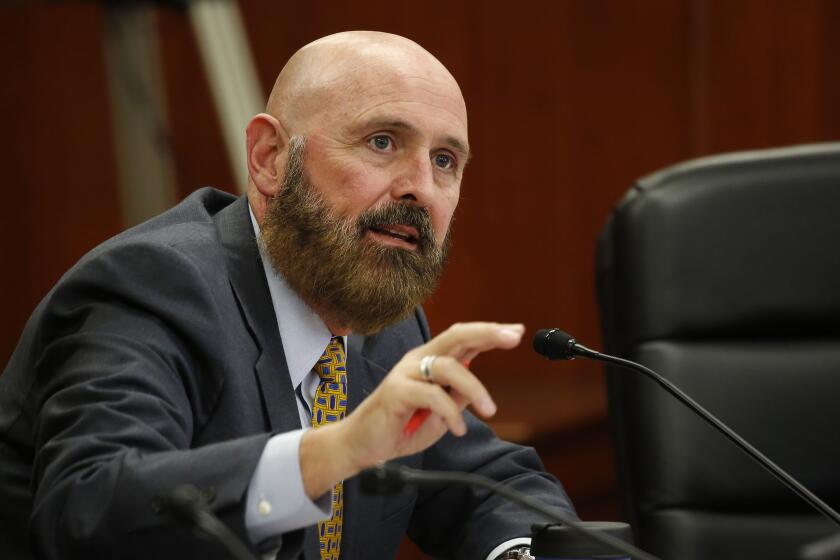L.A. approves its redistricting map, setting political boundaries for the next decade

- Share via
The Los Angeles City Council voted Tuesday to finalize its new set of district maps for the next 10 years, bringing a quiet end to a frequently contentious redistricting process.
On a 13-0 vote, council members approved a redistricting ordinance that places Koreatown in a single council district, reworks political boundaries in the San Fernando Valley and ensures that USC and Exposition Park remain in the South Los Angeles district represented by Councilman Curren Price.
Councilman Marqueece Harris-Dawson has pushed without success in recent weeks to have Exposition Park — which includes the Los Angeles Memorial Coliseum, Banc of California Stadium and the California African American Museum — moved out of Price’s district and into his own. On social media, Harris-Dawson said his district lacks major economic assets, describing the issue as a matter of “Black equity, representation and fairness.”
Each map under consideration would create a second district with a large Latino voter population. But Black and Asian voters would be grouped differently.
Harris-Dawson’s district, which also takes in a portion of South Los Angeles, is the only one in the city with a voting population that is majority Black. On Tuesday morning, he urged his constituents on Instagram to call in to the council meeting, saying he was “fighting for the future of all of South LA.”
Once the redistricting plan came up, however, Harris-Dawson voted with his colleagues to approve the ordinance. No one on the council brought up Exposition Park or any other facet of the redistricting map. Councilman Joe Buscaino was absent.
Harris-Dawson did not respond to The Times’ inquiries about his “yes” vote.
Price, whose district stretches from Staples Center south to 95th Street, said he wasn’t surprised that the vote went so smoothly, given the calls from his constituents for Exposition Park to stay in his district.
“My constituents worked very hard to express their points of view, and I think my colleagues recognized that,” said Price, whose district is overwhelmingly Latino and considered the city’s most impoverished.
Tuesday’s unanimous vote may have been a reflection of the council’s recess schedule. Had any member cast an opposing vote, a second vote on the redistricting ordinance would have been required next week, when the council is scheduled to be on its holiday recess.
The new maps are expected to go into effect in the coming weeks. Sophie Gilchrist, a spokeswoman for Council President Nury Martinez, said her boss had been prepared to schedule a special meeting for next week if the redistricting vote was not unanimous.
The council creates new boundaries for its 15 districts every 10 years, following the release of U.S. census data. To ensure equal representation, each of L.A.’s council districts must have around 260,000 constituents.
The tug of war over Exposition Park was a subplot of this year’s redistricting process, but it was frequently overshadowed by debates over how to reconfigure council districts in the Valley.
In October, a 21-member citizens commission recommended a map that would place five and two-thirds council districts within the Valley, a change aimed at giving that region’s voters more political clout.
Former Department of Water and Power official David Wright has agreed to plead guilty to a bribery charge, the U.S. attorney’s office said Monday.
As part of that proposal, the commission recommended huge changes to districts represented by council members Paul Krekorian, Bob Blumenfield and Nithya Raman. Neighborhood leaders in the Valley quickly rebelled.
Martinez led the council’s effort to rework the commission proposal, restoring portions of those three districts. Still, even with those changes, Raman is expected to lose about 40% of her current constituents as her district moves deeper into the Valley and takes in all or a portion of Encino, Studio City and Reseda.
Like Harris-Dawson, Raman voted against the redistricting plan last month. On Tuesday, however, she sided with the rest of her colleagues.
“The councilmember had made her objections to the map clear in previous meetings,” Raman spokeswoman Stella Stahl said in an email. “As we head into the new year, she is excited to meet her new constituents who can expect a knock on their door very soon!”
The new map also consolidates Koreatown into a single district — whose voters elected Councilman Mark Ridley-Thomas, who is currently suspended while he fights corruption charges. On Tuesday, Koreatown civic leaders praised council members for working to keep the area from being politically divided.
Koreatown’s boundaries were also a major issue during the city’s redistricting decisions of 2002 and 2012.
More to Read
Sign up for Essential California
The most important California stories and recommendations in your inbox every morning.
You may occasionally receive promotional content from the Los Angeles Times.













